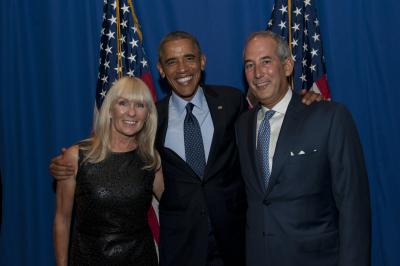Innovation through the application of leading edge technologies has always played an important part in Reuters business and it remains for me a cornerstone of business strategy in the digital information market. I have often said that Reuters has proven itself "light and agile on its technology feet" by reinventing its value proposition each generation in a way that leverages technology but does not encumber the company with legacy systems.
At the core of our use of technology is an obsession with speed accuracy and usability. Thus capabilities which allow us to collect and distribute information faster and more faithfully and then display it or permit it to be searched or consumed by man or machine more readily are at the core of our business.
One must however adopt a fairly broad definition of technology. For a 156-year old company it is not just a story of IP delivery. Thus at various periods in Reuters history everything from the telegraph to pigeons and rowboats have been the leading technology of the age. The story of the use of carrier pigeons by the original Baron Reuter to bridge the gap that existed during the mid 19th Century in the telegraph wires between Aachen and Brussels is well known. Not only did the pigeons represent a significant improvement in transmission speed over the prevailing "technology" of the day — horses but by sending more than one pigeon at the same time I claim (somewhat tongue in cheek) that the Baron actually invented Reliable Multicast.
The rowboat story is less well known. In the 1860s news from America used to take over a week to reach London since the best transmission medium of the day was the mail boat. Again Baron Reuter innovated by hiring enterprising oarsmen in Southern Ireland to intercept the mail boats coming from America and then telegraph the news to London once back on shore. It was using just this rowboat packet delivery that Reuters scooped the London market by DAYS with the news of the death of Abraham Lincoln in 1865.
I tell these stories not to trumpet Reuters ingenuity or long history (OK well a little bit) but more to make that point that innovation through better technology can take many forms and that the true innovator is the one who sees the opportunity to do things in a new way. Today IP technology running on silicon is the prevailing norm and it is difficult to imagine another model; however in a few years we may find that a new paradigm like optical computing has become the standard.
This process is not unique to computing and was best described by the late Tom Kuhn in his seminal book The Structure of Scientific Revolutions: The prevailing scientific theory of any era (e.g the view that the earth is the center of the universe) remains in force until the weight of scientific evidence is so strong that the explanatory power of the old paradigm breaks down and science moves on when a "revolutionary" posits a new model (the solar system) that then takes its place. This cycle can obviously be repeated over and over (Newtonian to sub-atomic to quantum physics); what is interesting is how long the old paradigm stays in force until disrupted by the new view. This I submit is why it is so important to "stay light on our technology feet". The winning model and the winning company is the one that is agile enough to see the new model (e.g. a search engine is really an advertising placement and monetization engine; the television set top box and computer will be one machine).
The moral of my story and one that I think Reuters has shown through its history is to always question the prevailing tech wisdom; never assume like the infamous head of the US Patent Office that everything useful has already been invented; and above all don’t confuse the value of your business with the machines and pipes that carry the content in any given era. Even if your business is those machines or pipes think about generalizing or abstracting your model to include a possibly radical next generation of transmission (hello wireless).





